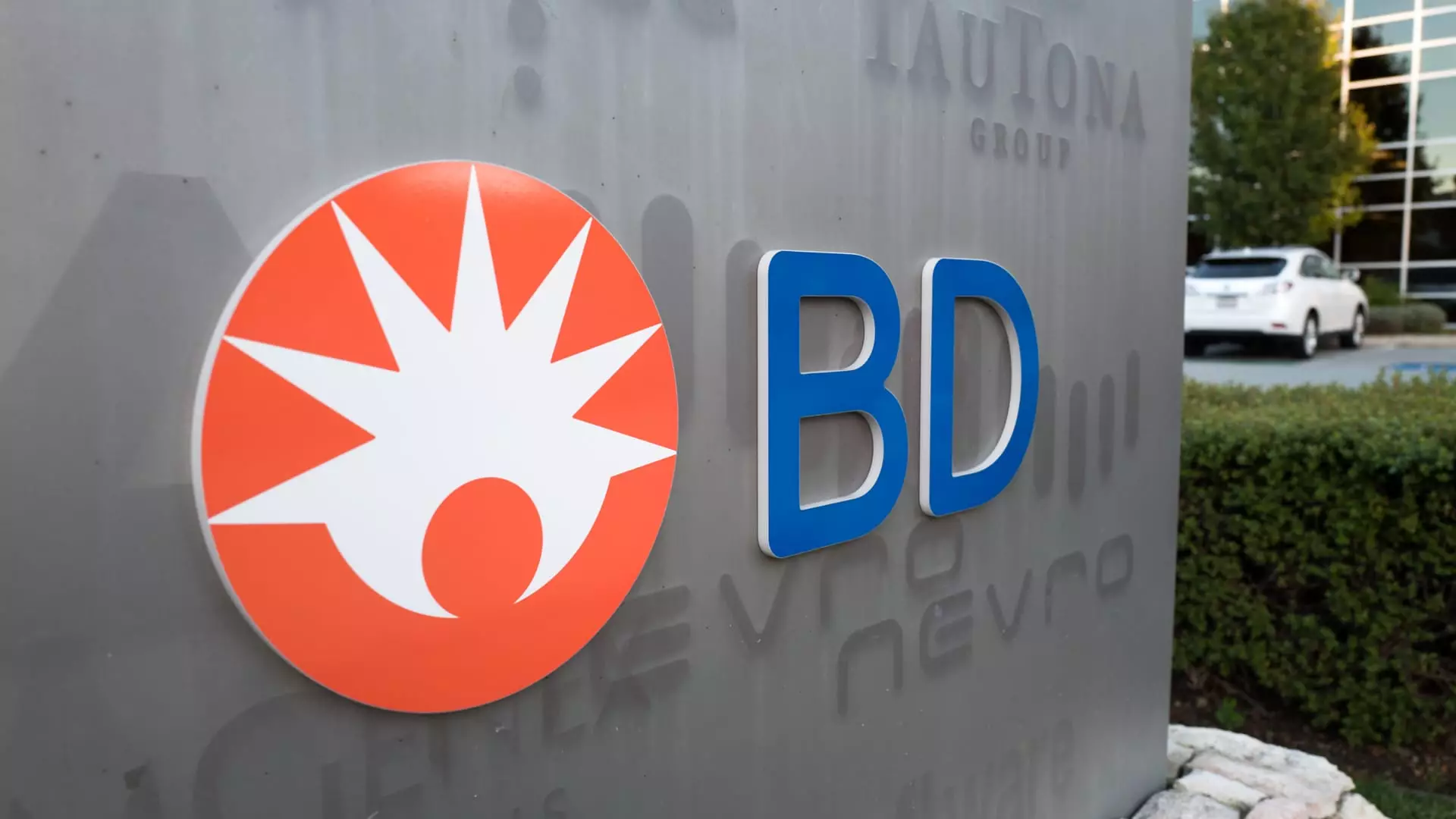Becton Dickinson (BDX) stands as a prominent global player dedicated to the development, manufacturing, and distribution of a diverse range of medical supplies, laboratory equipment, and diagnostic products. Serving a variety of stakeholders including healthcare institutions, life sciences researchers, and the public at large, BDX has positioned itself at the forefront of medical technology innovation. With a robust market capitalization of approximately $66.65 billion, BDX’s stock, valued at around $229.85 per share, serves as a testament to its significance in the healthcare domain.
BDX operates mainly through two distinct business segments: MedTech and Life Sciences. Each division features its own unique offerings and growth trajectories. The MedTech division encapsulates BD Medical, responsible for medication delivery systems and management solutions, and BD Interventional, focusing on products for vascular and surgical applications. On the other hand, BD Life Sciences provides essential products for diagnostics specimen collection and instrumental systems for disease detection.
The disparity between the two divisions is noteworthy; MedTech recently reported $15.1 billion in revenue, significantly eclipsing Life Sciences’ $5.2 billion. This growth disparity is further illustrated through their corresponding earnings before interest, taxes, depreciation, and amortization (EBITDA)—$6.7 billion for MedTech versus $2 billion for Life Sciences. Understanding these financial nuances is crucial for evaluating BDX’s potential for strategic restructuring.
Activist investment firms often play pivotal roles in guiding companies toward operational efficiency. Starboard Value, a well-known activist investor, has established a track record of enhancing value through direct interventions. Historically, the firm has achieved impressive returns—32.96% on strategic campaigns compared to 14.61% of the Russell 2000 index. Starboard’s influence extends beyond mere stock performance; its approach encompasses strategic campaigns within the healthcare sector, with an average return of 17.65% compared to the Russell’s 9.57%.
On February 3rd, 2023, Starboard announced its position in BDX, advocating for the separation of the Life Sciences division. This strategic call for divestiture aligns with the broader industry trend of focusing resources on specialized operations. Just days later, BDX expressed intentions to consider the bifurcation of its biosciences and diagnostics solutions. Starboard’s presence could be a driving force behind this pivotal consideration.
The rationale behind Starboard’s proposal stems from the fundamental business dynamics at BDX. The MedTech sector boasts higher growth rates with mid-single-digit projections, while Life Sciences barely touches low-single digits. While MedTech possesses a lower valuation multiple (between 13 to 14 times EBITDA), the Life Sciences segment is valued more favorably, often exceeding 20 times.
Consequently, the conglomeration of two distinctly performing business units under one corporate umbrella can dilute investor perceptions and valuations. Currently, BDX trades at a valuation reflective more of its lower-performing assets than of its higher-growth MedTech operations. Starboard’s strategic direction to divorce Life Sciences could realign market perception more favorably, unlocking substantial shareholder value.
If BDX proceeds with Starboard’s recommended separation, projections suggest the MedTech division could achieve a valuation between 13 to 14 times EBITDA while Life Sciences might attain figures beyond 20 times. Such a strategic divestiture has the potential to boost BDX’s overall market value to upwards of $110 billion, fundamentally transforming its valuation landscape.
Furthermore, division separation enables management teams to concentrate and allocate resources tailored exclusively to their respective operations, leading to improved operational efficiency. Independent entities can leverage market opportunities without being encumbered by the slower growth of their counterpart. This separation isn’t merely about ensuring better financial returns; it’s about creating a more focused, innovative business environment conducive to higher profitability.
Becton Dickinson finds itself at a crucial crossroads. The company’s proactive approach to considering a strategic separation prompted by activist pressures signifies a willingness to adapt in an evolving healthcare landscape. With the prospect of unlocking heightened value through focused management strategies and robust return potential, BDX has an opportunity to redefine its market presence. As Starboard illuminates pathways to operational improvement, the unfolding narrative at BDX highlights the merits of strategic introspection and the potential for transformative growth in a competitive industry.

